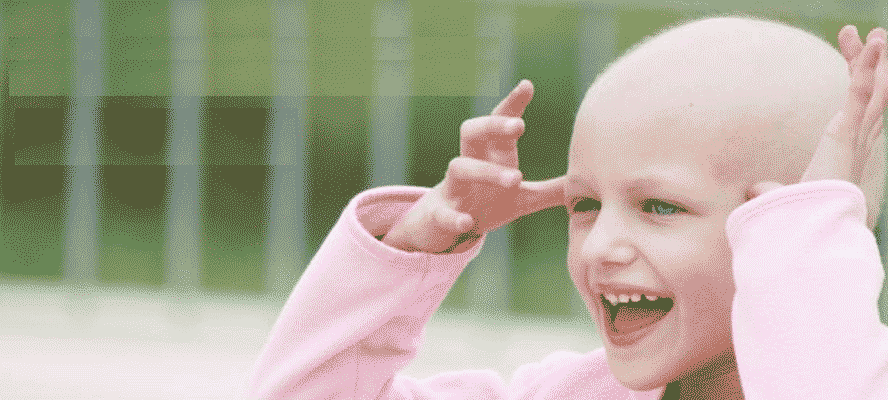Cancer is one of the leading causes of death not only in adults, but also in children. While there is a high rate of survival for childhood cancers in high income countries, only 20% of cancers in lower income countries are cured, due to several causes like lack of early and accurate diagnosis, lack of access to treatment and medications, death from toxicity, excess relapse and treatment abandonment. Cancer is the 9th most common cause of death in children in India; with the most common cancer in children between the age of 0 to 14 being leukemia, followed by lymphoma and central nervous system tumor. The 5 year survival rate of all childhood cancers combined in India is only 37 – 40%. There is an urgent need for the early detection, prompt treatment and regular follow-up to change this scenario.
Childhood Cancers
Cancer is an uncontrolled growth of cells in any tissue or organ,
forming a tumor that may eventually spread to other regions of the body and may
lead to death. In children, the symptoms are based on location and extent of tumor,
when it compresses tissues locally or when it spreads to distant sites leading to pain,
and organ dysfunction. Childhood cancers differ from those in adults biologically and
are generally rarer. Other ways in which childhood cancers differ from adult cancers
is the distinctive array of cancer types that occur in youngsters. While blood cancers
are most common in children, adults have a higher incidence of breast cancer, ovarian cancer,
prostate cancer and lung cancer. Pediatric cancer is also different from cancer in adults
with respect to how far it spreads, and how it is treated.
While the word cancer may evoke fear and worry in the mind of the parents and loved ones, early diagnosis and treatment can increase survival rate of pediatric cancers by a great degree. Early diagnosis of cancer in the child can be facilitated by making ourselves aware and looking out for cancer signs and symptoms in children.
Causes of Childhood Cancers
Broadly, the causes of childhood cancers can be distinguished into
environmental risks, microbial risks and genetic factors. However,
unlike cancer in adults, majority of childhood cancers do not have a
known cause and are not linked to lifestyle or environmental
risk factors.
Some environmental factors which may predispose children to cancer include ionizing radiations, some drugs, or metals, hydrocarbons or pesticide exposure to the mother during pregnancy. Children exposed to parental smoking were around 1.5 times more likely to suffer from malignancy. ‘ Microbial risk factors arise due exposure to viruses by the unborn baby, such as Epstein Bar Virus (EBV), Human Immunodeficiency Virus (HIV), Hepatitis B virus. Several genetic factors are involved in the development of cancer, for instance, patients with Down syndrome are 20 times more likely to suffer from leukemia.’ Other genetic factors associated with higher risk of developing cancer include immune deficiencies, genetic syndromes like neurofibromatosis, familial adenomatous polyposis and glycogen storage diseases, and inherited gene mutations. However, only a few childhood cancers are inherited from parents.
Signs to look out for
The early signs and symptoms of cancer are nonspecific
and often overlap with symptoms of other diseases which make them slightly
difficult to recognize. However, they should be identified on time and followed
with further assessment and appropriate treatment for a particular cancer.
The general signs and symptoms can be summarized as a mnemonic CHILD CANCER
- Continued unexplained weight loss
- Headaches associated with early morning nausea
- Increased swelling and pain in joints and bones
- Lumps, especially in the abdomen, neck, chest, pelvis or armpits
- Development of excessive bruising
- Constant infections
- A whitish colour behind the pupil of eyes
- Nausea with or without vomiting
- Constant tiredness
- Eye or vision changes
- Recurrent or persistent fevers
Common Cancers in children: Symptoms, Risk factors, Diagnosis and Treatment
Acute leukemia
Leukemia accounts for a large number of childhood cancers,
occurring in early childhood period. It is a disease of the bone marrow, whose
risk factors include ionizing radiation, immuno-suppressant drugs, and
chromosomal abnormalities like Trisomy 21- Down syndrome. The classic
signs of leukemia in children are:
- Anemia- along with fatigue and pallor, shortness of breath, dizziness and heart palpitations.
- Thrombocytopenia a decrease in the count of thrombocytes, a type of blood cells. It is symptomized by easy bruising and bleeding, visible red or brown colouration of urine, and red spots on skin (petechiae).
- fever-recurrent and usually without a known cause.
- Recurrent infections arises due to low white blood cell counts.
- Bone or joint pain.
If most of these, symptoms are observed, blood tests can be done to get a complete blood count, which is followed by bone marrow biopsy to confirm the diagnosis of leukemia. Acute leukemia is treated through chemotherapy, radiation therapy and sometimes bone marrow transplant.
Lymphoma Lymphoma affects the lymphoid tissues and is divided into two major types- non-Hodgkin’s lymphoma and Hodgkin lymphoma, of which the former occurs more commonly. The risk factors of lymphoma are radiation exposure, immune deficiency syndromes like Wiskott-Aldrich syndrome, ataxia-telangiectasia, Severe Combined Immunodeficiency (SCID) syndrome and viral infections like EBV and HIV infections. For non-Hodgkin’s lymphoma, being male is also a risk factor, as it is more likely to occur in boys. Signs and symptoms include:
- Severe headache
- Blurred vision
- Dizziness
- Seizures
- Behavioral and personality changes
- In children younger than 2 years of age, irritability, poor feeding and vomiting are also symptoms
The most common sign is the presence of a painless lymphadenopathy (lymph node swelling), especially in the supraclavicular area, which are usually firm and rubbery. Diagnosis is done by biopsy, lumbar puncture, Complete Blood Count (CBC) test, X-ray scans and/or CT scan. Both types of lymphoma are treated with chemotherapy, monoclonal antibodies and stem cell transplant.
Central nervous system cancer Among the most common cancers in children, CNS cancers mostly occur in the cerebellum, brain stem, followed by frontal, parietal and occipital lobes. CNS cancers are further divided into gliomas- include glioblastoma, astrocytoma a ependymoma, and Primitive Neuroectodermal Tumor (PNET). The causes of CNS cancers are not yet well understood although ionization radiation exposure is a known risk factor, like certain inherited disorders such as neurofibromatosis types 1 and 2.
Signs and symptoms of CNS cancers differ based on the child’s age. In infants, there may be virtually no sign of the tumor except larger size of the head owing to increase in the size of the skull to accommodate the growing tumor. By the age of 2, the child may show discomfort by rolling the head and being fussy. Detection is done by CT scan or MRI, but definitive diagnosis requires biopsy. These tumors are treated with surgery (if operable), chemotherapy and radiation.
Palliative Care in Pediatric Cancer Palliative care is a patient care approach that improves the quality of life of the patient and family facing lifethreatening, life-limiting or chronic illness by treatment of pain and other problems including spiritual and psychological struggles. Since, children deal with significant physical and psychosocial suffering while facing cancer, the importance of palliative care is emphasized even in healthcare systems where resources are limited.
Among the several aspects of palliative care in pediatric cancer are, symptom assessment and intervention, an awareness about patient perspective and mindfulness regarding decisional preferences of the patient and family. Symptoms are more than just markers to identify a disease, they are real tangible experiences undergone by these children, and efforts have to be made by the healthcare staff to assist them through these. Anxiety, fear of being alone, loss of independence are psychological symptoms, that are often untreated in favor of physical symptoms. Pain is commonly reported in children dealing with cancer, which is particularly distressing for the family as well. Palliative care has to be integrated as a standard care to help both the patient and family. Being aware of the patient’s perspective helps gain information regarding the nature of the palliative care that a particular patient requires. In many cases, the children themselves are aware of their situation and need honest communication regarding the possibilities of what they might have to face, in a compassionate manner. Finally, these patients and their family should be allowed to discuss their preferences regarding crucial decisions during the advanced stages of the disease and honor the wishes of the patient.
Growing into Adults
The battle against cancer does not end with its cure, patient follow-up is important for identifying any
complications that may arise due to the cancer or its treatment. The effects of radiation and chemotherapy
may cause life-long side effects on the life of the child which necessitates proper follow up for the rest of
their lives. Some of these complications can affect organ function, growth and development, and risk for
developing additional cancers. The follow-up evaluation is highly individualized based on the age of cancer
onset as well as the age at which treatment was done and nature of the therapeutic approach. The risk of
late effects is directly proportional to the intensity of treatment, thus, longer treatments, higher doses of
chemotherapy and radiotherapy, and history of relapse increase the risk of treatment effects. In addition to
regular check-ups, health counselling and promotion of a healthy lifestyle are important aspects in reducing
the risk for health problems that come up in these children as they grow into adults.
Over the course of the last few decades, survival rate of childhood cancers has constantly been on the rise. Increased number of survivors are associated with early and accurate diagnosis followed by appropriate, and timely treatment. Through all of this, it should be kept in mind that children are surprisingly resilient and strong in many cases, children are reported to respond better to cancer treatments as compared to adults. Our role as adults is to be aware of the signs that may indicate malignancy in children and take the necessary steps so that it is diagnosed at the earliest.








